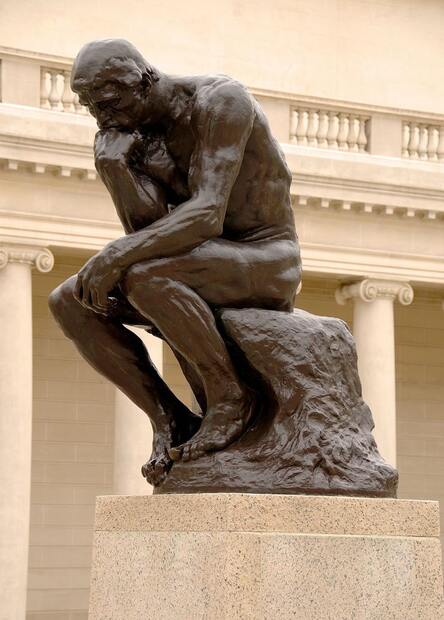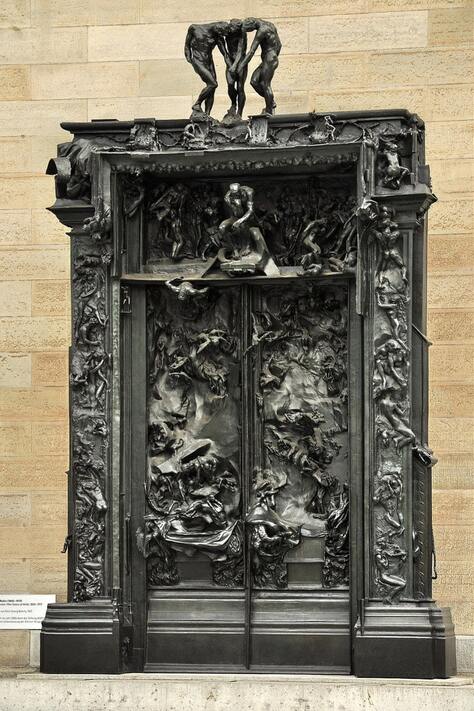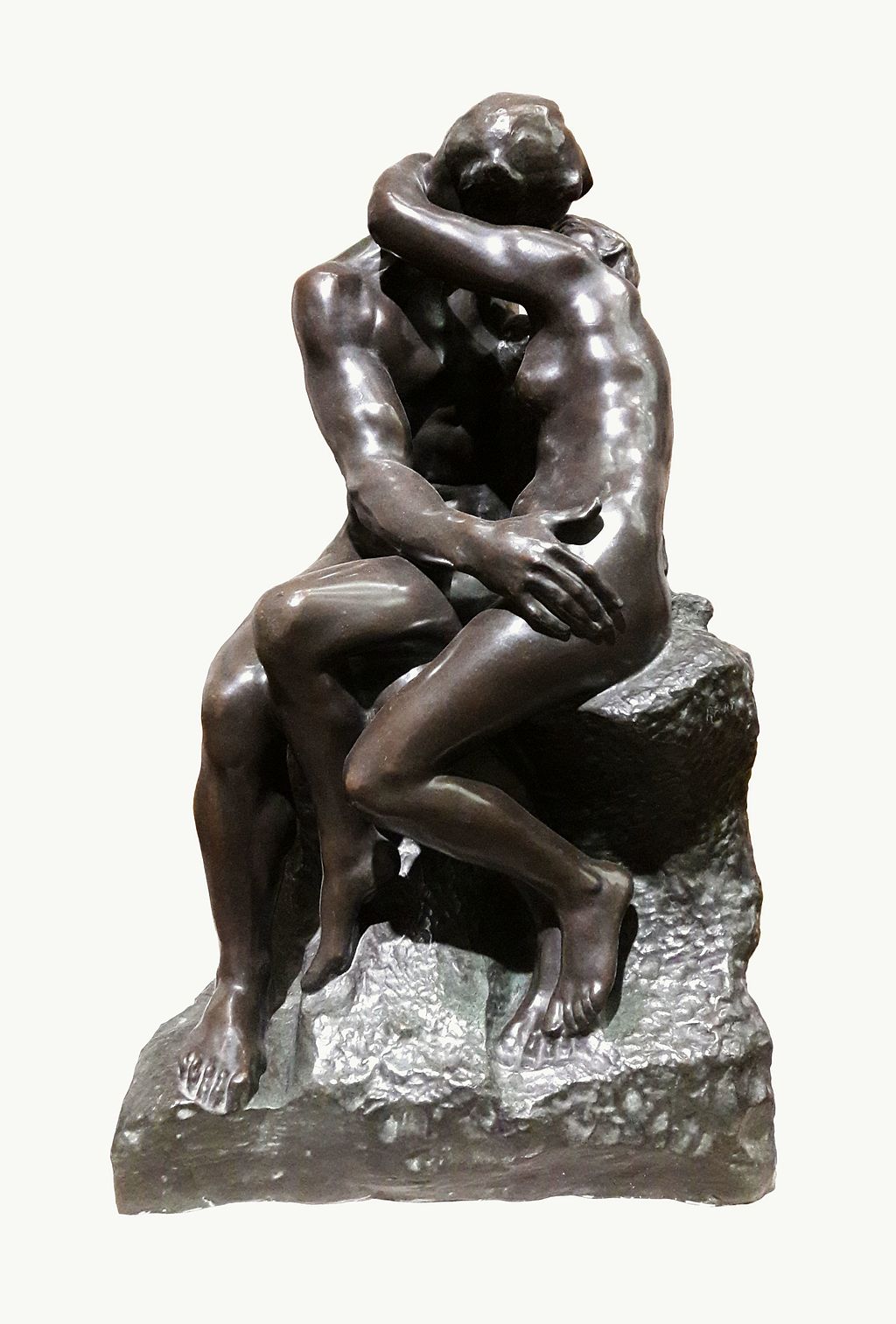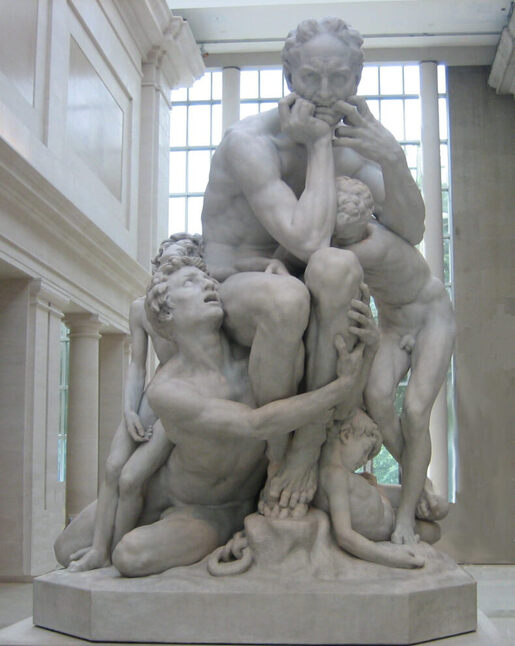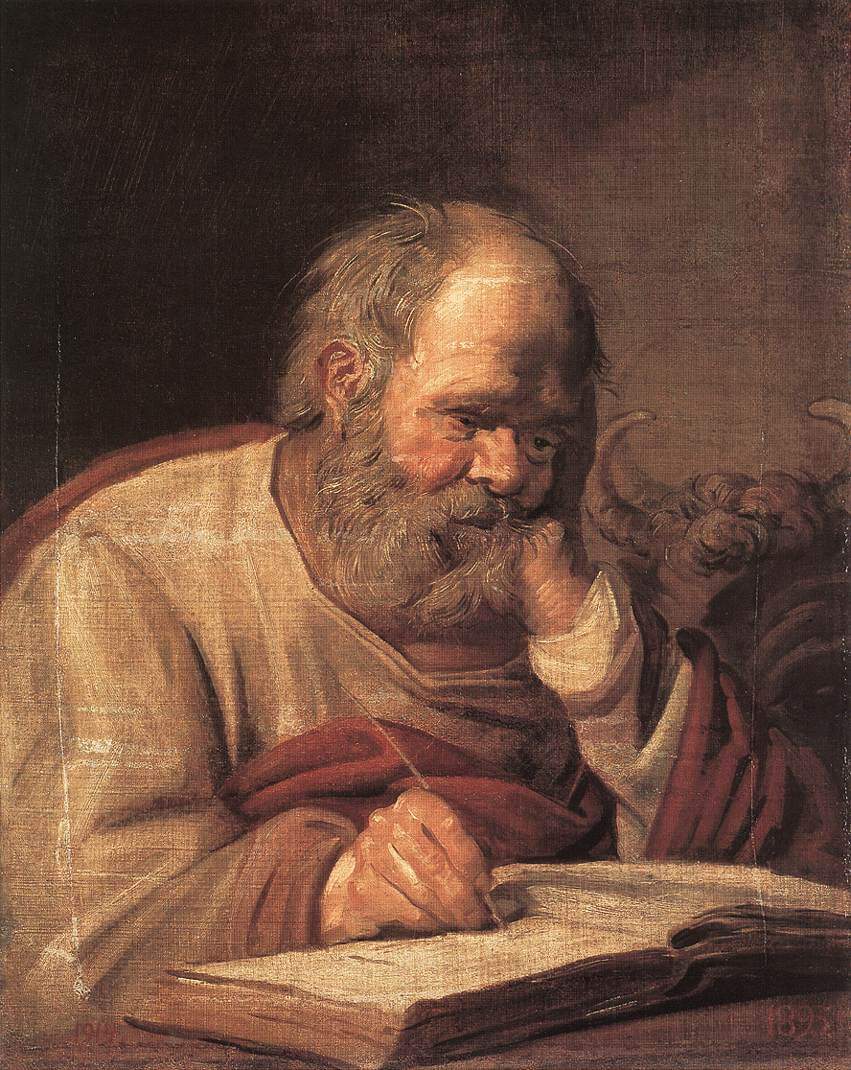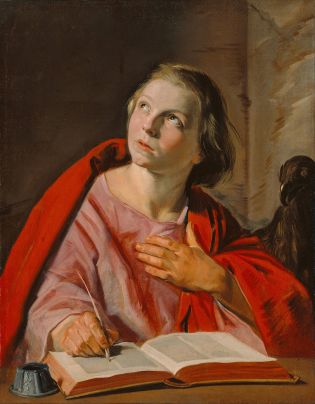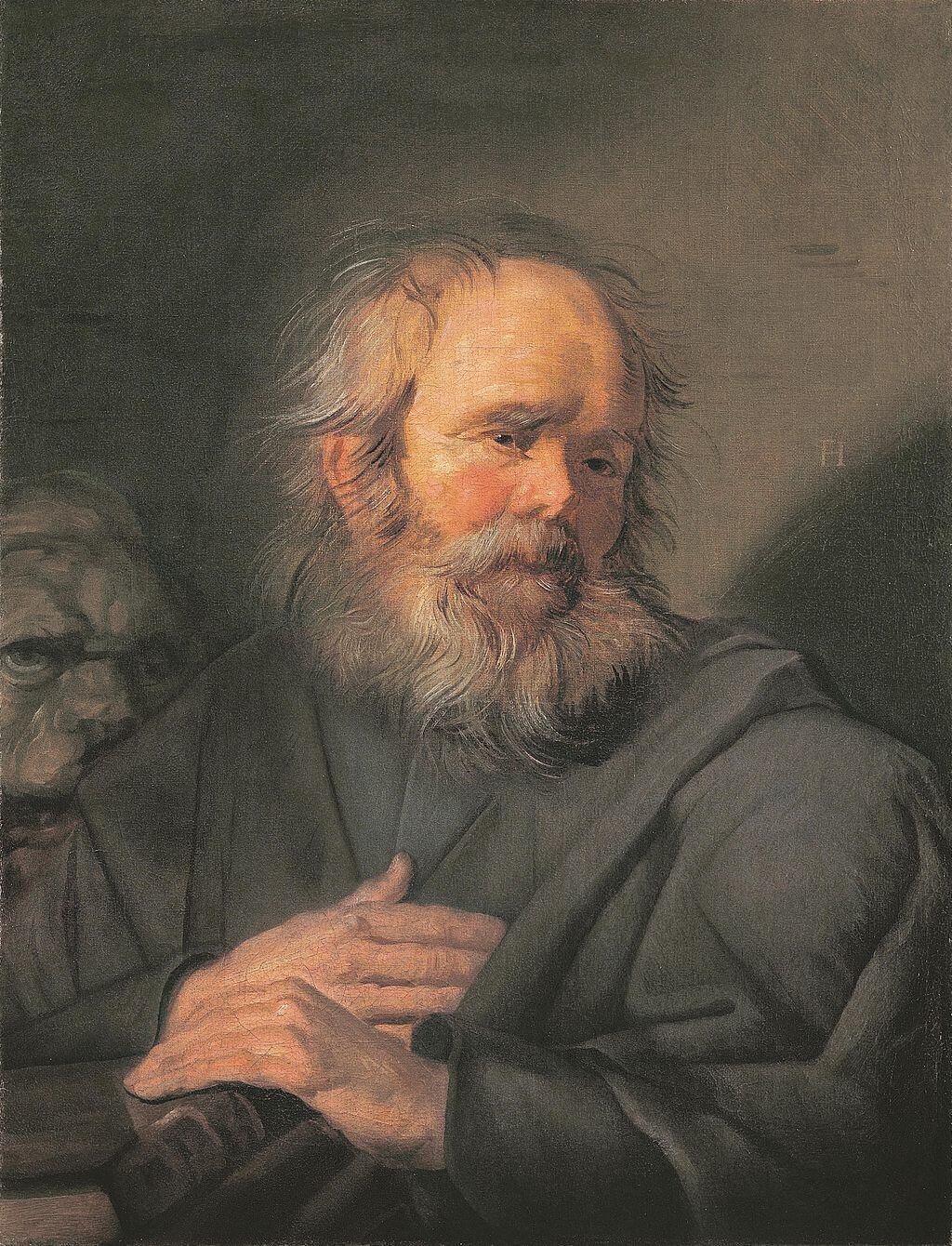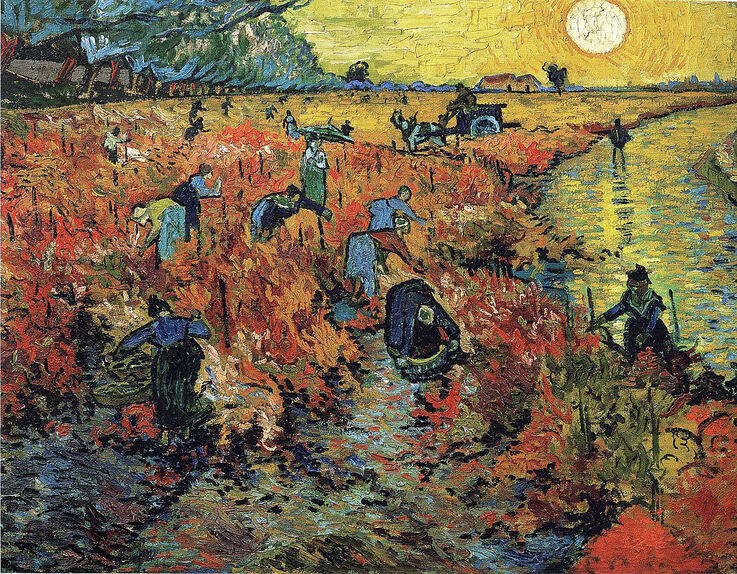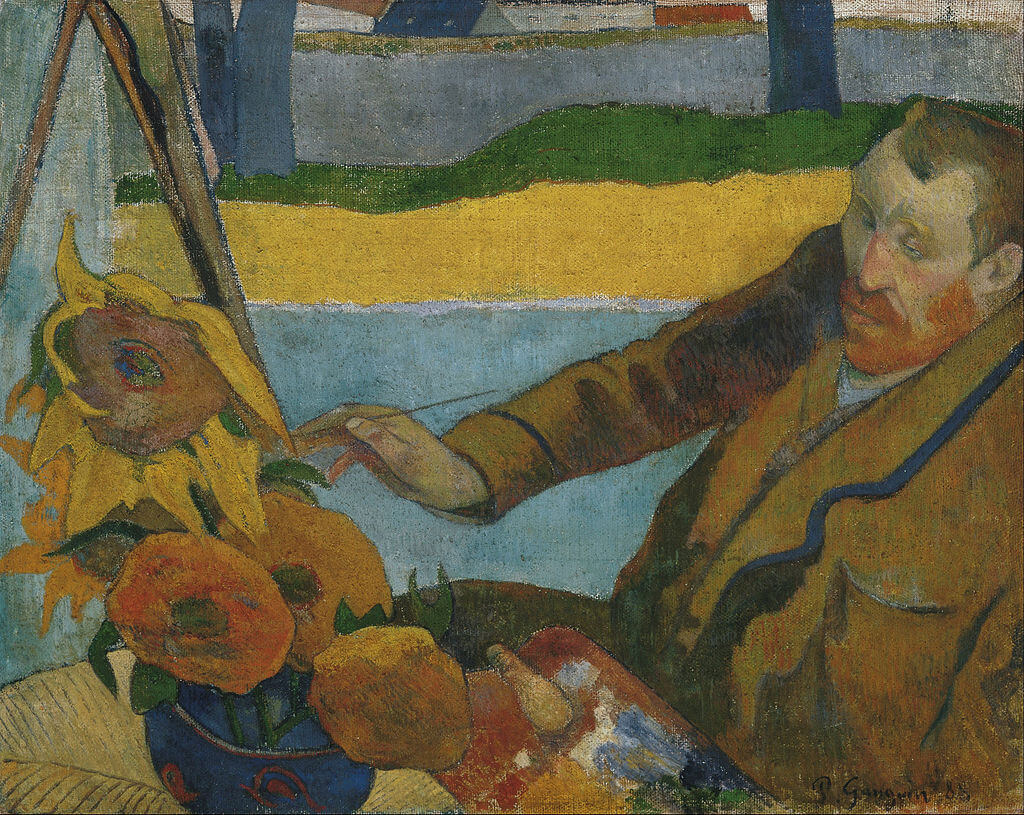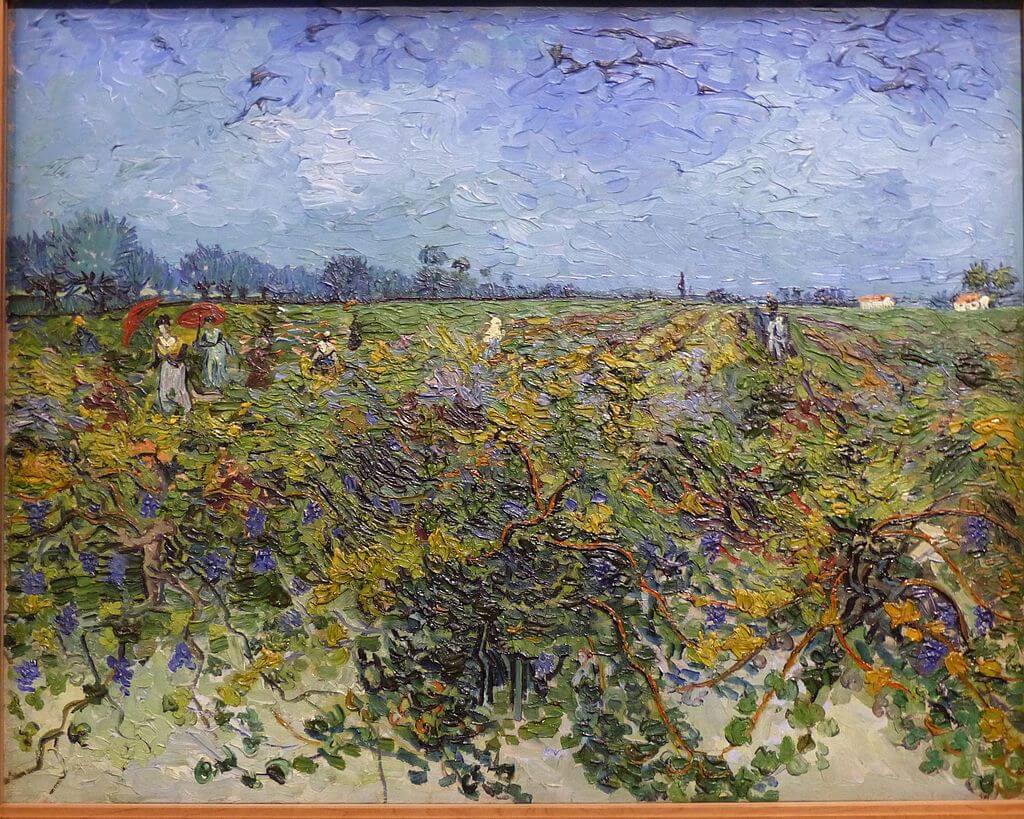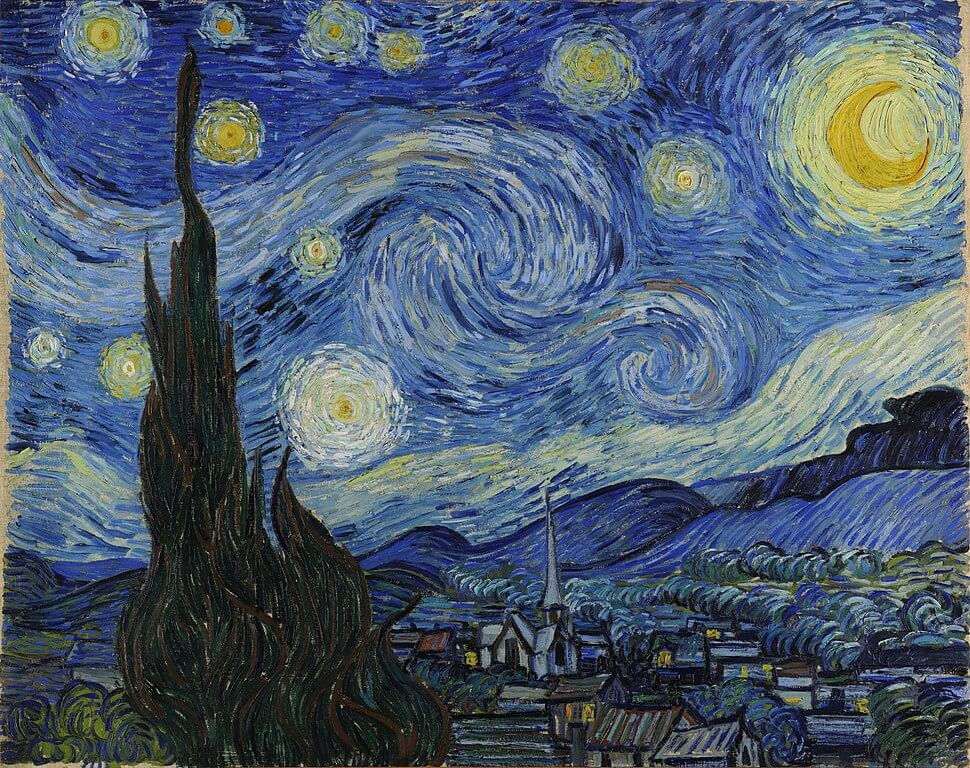|
Where?
When? Rodin created the original sculpture in 1881. He created the first monumental-size sculpture in 1903 and after this many casts of the sculpture have been created, even after his death in 1917. What do you see? A sculpture of a muscular, naked man sitting on a rock. The man is in deep thought and uses his whole body to think. His head is bent forward and leans on his right hand. His wrinkled face, knitted eyebrows, swollen nostrils, compressed lips, and absent-minded gaze reinforce the idea that the man is deep in his thoughts and is completely unaware of the world around him. The man is struggling with his thoughts with every part of his body. Almost no part of his body is relaxed. Most muscles are tense, which is clear by looking at the clenched fist, the arched back, the legs below his body, and the squeezed toes. The statue is over six feet tall making the figure larger than life. It was the intention of Rodin to put the independent sculpture on top of a pedestal such that it would make a colossal impression on the viewers. Backstory: In 1880, Rodin received a large commission from the Directorate of Fine Arts in France to create the entrance doors for a new museum that was to be built (but never opened in the end). He was given the freedom to choose his own theme and decided on creating a scene from Dante’s book Inferno. Rodin was supposed to finish the project in five years but continued to work on the project for 37 years until his death in 1917. The doors – named The Gates of Hell – would eventually include a total of 180 different figures, and they would form the basis for many of Rodin’s most famous statues. Rodin originally created all figures in plaster, and the doors were then to be cast in bronze. The central and the most important part Rodin created for these doors was the statue of The Thinker (Le Penseur in French) who sits right above the two doors with all the characters from the Inferno behind him. The statue was about 27 inches (70 cm) high.
Multiple versions: The statue of The Thinker can be found all around the world. Rodin created the first version of this statue in plaster in 1881. In 1903, he completed the first monumental-size version of this statue. He considered it to be a remarkable piece and wrote to the client of his first bronze casting that he would ensure that only a few copies of the statue would ever be made. However, he did not keep his word.
During Rodin’s life, already more than 20 versions of The Thinker were produced. And after his death, the right for reproduction was turned over to the Republic of France. Nowadays, more than 70 bronze and plaster versions exist and are on display in Asia, Australia, Europe, North America, and South America. Interpretation: There are various interpretations of what and who The Thinker represents. When initially creating this statue as part of The Gates of Hell, Rodin meant the figure to represent Dante pondering about the fate of the damned people entering through the Gates of Hell. This interpretation is based on Dante’s book Inferno, the first part of his trilogy known as The Divine Comedy. When Rodin started to create independent versions, he started to consider different interpretations. Overall, he considered the statue to represent the struggle of the human mind. But he also started to see hope in it. The thoughts slowly become clear, and the man turns from a thinker, into a dreamer, and finally into a creator. Over time, other interpretations have also been given. Some consider the statue to represent Rodin himself. Others interpret the figure as Adam contemplating the sin he committed in Paradise. Who is Rodin? François Auguste René Rodin was born in 1840 in Paris, where he died 77 years later in 1917. He was rejected three times by the leading art school in Paris, the École des Beaux-Arts. It forced him to educate himself differently and this has contributed to his unique style. He was inspired by some of the great Renaissance sculptors like Donatello and Michelangelo. Most of Rodin's famous sculptures were originally intended for his commission of The Gates of Hell. Over time, he realized that he could turn many elements of The Gates of Hell into separate statues and some of these statues have achieved world fame. Among them are The Three Shades and The Kiss. Many of Rodin’s statues have been cast multiple times in bronze which means that his statues have spread across the world.
Why a bronze statue? Bronze is a combination of different metals. It consists primarily of copper (typically 85-90%) and tin (typically 10-15%), but can also contain minor quantities of other metals or nonmetals. It is an attractive material for sculptors for the following reasons.
Fun fact: While The Thinker is one of the most famous statues in the world, Rodin initially named this statue “the poet.” Later it was renamed based on suggestions by foundry workers that the sculpture was quite similar to a sculpture by Michelangelo on Lorenzo de’ Medici, Duke of Urbino. This sculpture was more popularly known as “Il Penseroso” (The Thinker), and this name was also given to Rodin’s statue. The Thinker also shows some resemblance to Ugolino and His Sons which was created by Jean-Baptiste Carpeaux in the 1860s.
1 Comment
Where? Hall 11 of the Main Building in the Pushkin Museum
When? 1625 Commissioned by? Unknown What do you see? Saint Mark, the writer of the Gospel of Mark dressed in a nice dark blue cloak. His face is illuminated by the light that comes from the left. His beard is long and somewhat messy and his hair is unkempt. His hands are beautifully painted. Saint Mark is in his thoughts with his right hand against his chest and his left hand resting on top of some books.
Backstory: This portrait is part of a series of four depicting the four evangelists, Matthew, Mark, Luke, and John. The paintings of Saint Matthew and Saint Luke are in the Odessa Museum of Western and Eastern Art in Ukraine. The painting of Saint John the Evangelist is in the Getty Museum in Los Angeles.
The paintings on the four evangelists were acquired by the Russian Empress Catherine II for the Hermitage Museum in 1771. One ship containing most of the paintings sank and the second one, containing the works of Frans Hals, got damaged on the way from The Netherlands to Saint Petersburg but reached its destination. In 1812, these paintings were brought to the Ukraine to decorate some churches, but during the transport the four paintings got separated, and it is unknown what happened to them. Saint Mark was rediscovered in 1972, and in 2013 the Pushkin Museum acquired it.
Who is Saint Mark? John Mark was an assistant of the apostles Paul and Barnabas who he joined on their missionary journeys in the first century AD. He was both a friend and an interpreter for these two apostles.
In early Christianity, John Mark was considered to be the writer of the Gospel of Mark. However, nowadays, there is serious doubt on whether John Mark was indeed the author of the Gospel of Mark. One of the reasons for this is that John and Mark were very common names during those days and so there can be many other people who could be identified as the author of the gospel. Who is Hals? Frans Hals the Elder was born in 1582/1583 in Antwerp, Belgium and died in 1666 in Haarlem, The Netherlands. He is known for his portraits and his lively and colorful depictions of militia (local armies of non-professional soldiers). His paintings on the four evangelists are not very representative of him as these are his only (known) religious paintings. His work was forgotten a bit after he died, but at the start of the Impressionist movement in 1860, Hals was rediscovered and has only grown in popularity since. Nowadays, Hals is considered to be one of the prime examples of painters in the Dutch Golden Age, together with Rembrandt and Johannes Vermeer. Fun fact: In 1955, this painting was anonymously sold as a work of the Italian painter Luca Giordano. In 1972, the painting was up for auction at Christie’s as a work from an anonymous painter with the title ‘Portrait of a Bearded Man.’ However, the German art critic, Claus Grimm, figured out that this painting was the missing painting by Frans Hals of Saint Mark. This was not an easy task as the painting had substantially changed as you can see in the first picture below. In the 19th century, someone had painted a large white pleated collar around the neck of Saint Mark to make it look like a Baroque painting. Moreover, the painting had lost all its color. The second picture below shows how the painting looked after an initial rigorous restoration. It is great to see how the picture subsequently has been restored to what we can see it today. Interested in a copy for yourself? Poster.
Where? Second floor of the Department of 19th and 20th Century European and American Art in the Pushkin Museum
When? 1888 What do you see? The vine harvest in Arles, in the South of France. On the top right is the sun in a yellow sky. The sunlight affects the landscape, starting with the gold-colored river on the right side. The sun makes the vine leaves in the bottom half of the painting look red. According to a letter written on November 6, 1888, by Vincent van Gogh to his brother, the vineyard looked like red wine in the sunset. The vineyard in the top half of the painting looks yellow, just as Van Gogh observed it during his stroll through the vineyards. A large number of people, mainly dressed in blue, is working in the vineyard. The workers in the background are depicted as blank silhouettes. The field workers are picking vines during fall. They naturally blend in with the vineyard. On the top left is a series of blue and green trees and in the middle background is a house. Van Gogh used several diagonal lines in his composition and most viewers naturally start looking at the sun when viewing the painting. The viewers’ eyes then move down along the diagonal black line on the left of the river in the direction of the bottom left of the painting. Backstory: This painting is also referred to as The Red Vineyard at Arles. Van Gogh created it in a single day on November 5, 1888. He painted this work about two weeks after Paul Gauguin joined him in Arles. The colorful works of Gauguin inspired Van Gogh to also use more colors for this painting, and he continued to do that in his later works. Van Gogh created this painting from his memory, the day after an evening walk through the vineyards near Arles. Van Gogh liked to work from memory rather than by directly painting from observation as painting from memory gives paintings a more artistic look. The only painting that Gauguin completed during his two-month stay in Arles was The Painter of Sunflowers (Portrait of Vincent van Gogh) which is in the Van Gogh Museum in Amsterdam. In September 1888, Van Gogh also created another painting of the vineyards, called The Green Vineyard. This painting is on display in the Kröller-Müller Museum in The Netherlands.
Symbolism: The main message of this painting is that the people living at the end of the 19th century had to work long days. The workers in this painting are still doing manual labor during sunset at the end of the day. Van Gogh also liked the field workers as they were in sync with nature.
Who is Van Gogh? Vincent Willem van Gogh (1853-1890) was born in Zundert in the south of The Netherlands. He was the oldest of six children who survived birth and grew up in a very religious family. Vincent wanted to become a pastor, like his father, but failed the entrance exam. Instead, he worked for some time as a missionary. His career as an artist was relatively short. Van Gogh only started painting at age 27 on the advice of his brother. In 1888, Gauguin visited Van Gogh in Arles. In anticipation of his visit, Van Gogh created his famous series of sunflower paintings. One of the versions of the Sunflowers is in the National Gallery in London. Another famous painting by Van Gogh, created in 1889, is The Starry Night which is in the Museum of Modern Art in New York.
Fun fact: Van Gogh created about 900 paintings and 1100 drawings during his relatively short career but only sold one painting (at least according to official records). In 1890, he sold The Red Vineyard at an art show in Brussels for 350-400 Belgian Francs to the Belgian artist Anna Boch. This is equivalent to about $1,500 today.
In 1906, Anna Boch sold the painting for 10,000 Belgian Francs to the Russian art collector Sergei Shchukin. The brother of Anna Boch, Eugène Boch, was a friend of Van Gogh. There are theories that Van Gogh may also have sold a few other paintings, but clear evidence for those theories lacks. During his life, Theo, the brother of Vincent van Gogh, supported him financially and tried to promote his work as he was an art dealer. However, Van Gogh’s work was different from the popular Impressionist paintings at that time and was not much in demand. There were a few art critics and artists that appreciated his work, but he was ahead of his time for most of the rest of the people. After his death, his works became much more popular. |
Categories
All
|
- Home
- Blog
-
Museums
- Alte Pinakothek
- Art Institute of Chicago
- Baltimore Museum of Art
- Barber Institute of Fine Arts
- Bargello
- Barnes Foundation
- British Museum
- Church of Sant’Anastasia
- Cleveland Museum of Art
- Courtauld Institute of Art
- Detroit Institute of Arts
- Frans Hals Museum
- Galleria Borghese
- Gallerie dell'Accademia
- Getty Museum
- Guggenheim
- Hermitage Museum
- Kunsthistorisches Museum
- Kunstmuseum Basel
- Legion of Honor Museum
- Louvre
- Mauritshuis
- Metropolitan Museum of Art
- Musee d’Orsay
- Museum of Fine Arts in Boston
- Museum of Modern Art
- National Gallery in London
- National Gallery of Art
- National Museum in Poznań
- Norton Simon Museum
- Ny Carlsberg Glyptotek
- Palace of Versailles
- Palazzo Pitti
- Palazzo Vecchio
- Petit Palais
- Philadelphia Museum of Art
- Prado
- Pushkin Museum
- Ravenna Art Museum
- Rijksmuseum
- San Diego Museum of Art
- Santa Maria delle Grazie
- St. Peter's Basilica
- Städel Museum
- Statens Museum for Kunst
- Tate Britain
- Tate Modern
- Timken Museum of Art
- Uffizi
- Vatican Museums
- Wallace Collection
-
Artists
- Altdorfer
- Anguissola
- Berlin Painter
- Bosch
- Botticelli
- Boucher
- Bronzino
- Bruegel the Elder
- Brunelleschi
- Cabanel
- Caillebotte
- Canova
- Caravaggio
- Carpeaux
- Cezanne
- Cimabue
- David
- Degas
- Delacroix
- De Maria
- Donatello
- El Greco
- Fontana
- Fra Angelico
- Fragonard
- Gauguin
- Gentileschi
- Gericault
- Gonzalez-Torres
- Goya
- Hals
- Hogarth
- Hokusai
- Ingres
- Leonardo da Vinci
- Lippi, Filippo
- Longhi, Barbara
- Lorrain
- Makovsky
- Manet
- Massys
- Matisse
- Merian
- Michelangelo
- Mochi
- Modigliani
- Monet
- Panini
- Parmigianino
- Perugino
- Picasso
- Pisanello
- Raphael
- Rembrandt
- Renoir
- Reynolds
- Rivera
- Rodin
- Rubens
- Scultori
- Seurat
- Steen
- Tintoretto
- Titian
- Toulouse-Lautrec
- Turner
- Uccello
- Van der Weyden
- Van Dyck
- Van Eyck
- Van Gogh
- Van Hemessen
- Vasari
- Velazquez
- Vermeer
- Veronese
- Vigée Le Brun
-
Locations
- Books
- About Us

